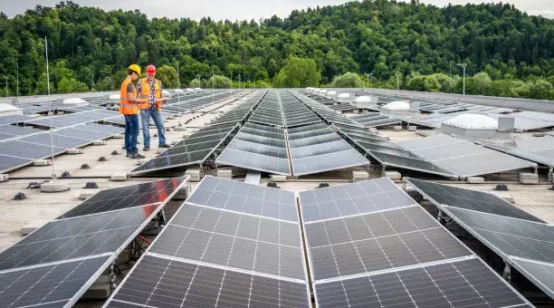
Apparently keen to replicate Russia’s floating nuclear power station, China is looking to launch a similar barge in the disputed South China Sea to boost its claims in the prolonged sovereignty dispute, according to the US.
Russia’s Akademik Lomonosov, the first ship of its kind, was named after the 18th-century Russian scientist Mikhail Lomonosov, could be copied around the world before the environmental impact of what has been called a floating Chernobyl has been studied.
While the Russian barge will have to cope with the choppy seas and ice of the Arctic Ocean, any Chinese counterpart will need to be equipped to endure tropical typhoons.
China plans to power some of its occupied islets with nuclear energy, the US Department of Defence reported. The Chinese authorities last year said they were planning to install “floating nuclear power stations” by 2020, according to the report.
The Russian nuclear floating barge is equipped with two KLT-40C reactor systems, similar to those used on icebreakers.
Observers say the technology could help China strengthen its grip on the disputed region
“You are literally facilitating an increase of physical control of the South China Sea,” said Collin Koh of Nanyang Technological University in Singapore.
“I think the more immediate concerns of anyone, be they, claimants, be they non-claimants, is a huge ecological risk, and taking into account that Chinese nuclear-energy technology may not necessarily be one of the best in the world,” the energy scholar said.
China was unlikely to do an environmental impact study on any nuclear-power barge before launching them, Koh added.
Russia announced floating nuclear power programme in 2000 with a Ministry for Atomic Energy project that saw construction begin in 2007 and the first barge is currently being loaded with uranium in Murmansk ready to start operations near Pevek in the far east of Russia.
The Akademik Lomonosov is 144 metres long and 30 metres wide and has an eye-watering displacement of 21,000 tonnes.
The lifecycle of the Russian floating power station is 40 years with the possibility of being extended to up to 50 years.
A stable power supply would help Beijing ensure it can develop the artificially enlarged islands, while other claimants like the Philippines, Vietnam, Malaysia and Taiwan, would probably avoid floating power plants to prevent accidents.
Neglecting their potential for renewable generation, China currently used generators to power the seized islets more than 1,000km from the Chinese mainland, Koh said.
More than 1,000 Chinese citizens are now living on the showcase Woody Island in the Paracel islands, where Beijing is also looking to promote tourism.
Washington might take nuclear power in the South China Sea as a new cause to send naval ships into the sea and warn China, said Jay Batongbacal of the University of the Philippines.
The US says it supports freedom of navigation in the South China Sea and challenges Beijing’s ever-growing grip. It helped Vietnam, Taiwan and the Philippines militarily in recent years.
But once China installed some form of floating nuclear plant, any diplomatic protests would be too late to stop it, Batongbacal said.
“There really isn’t much [other states] can do once China installs those things there,” the security scholar said. “Their best hope is to bring pressure to bear and discourage China from actually doing it.”
The Akademik Lomonosov could be replicated around the world. Picture credit: YouTube





